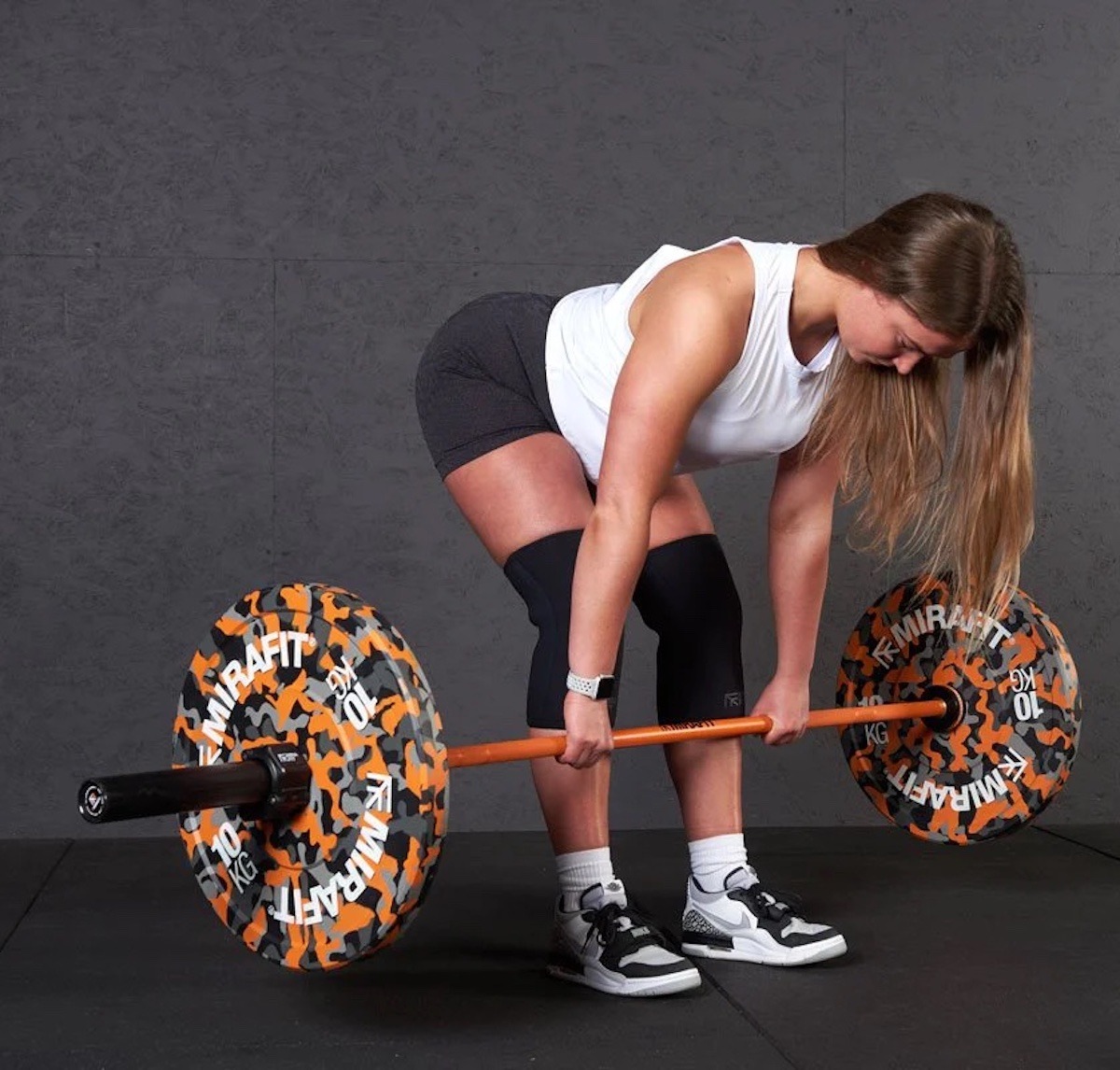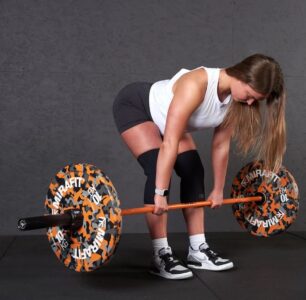Introduction
When it comes to rugby, strength and power are essential attributes for success on the field. One exercise that can help female athletes develop these qualities is the Romanian deadlift. Despite its intimidating name, this exercise offers numerous benefits for rugby players of all levels. In this article, we’ll delve into what Romanian deadlifts are, how they target specific muscle groups, their outcomes, and how they can benefit female rugby players.
What Muscles Do They Target?
Romanian deadlifts primarily target the posterior chain, which includes muscles such as the hamstrings, glutes, and lower back. Additionally, this exercise also engages the core muscles to stabilize the body throughout the movement. By focusing on these muscle groups, Romanian deadlifts help improve overall strength and stability, which are crucial for rugby players when tackling opponents and maintaining balance on the field.
What makes them Different?
The Romanian deadlift (RDL) is a variation of the conventional deadlift exercise, but there are several key differences that distinguish it from its counterpart:
- Range of Motion: In the Romanian deadlift, the lifter maintains a slight bend in the knees throughout the movement, allowing the barbell to descend only until they feel a stretch in the hamstrings. This results in a smaller range of motion compared to the conventional deadlift, where the lifter typically lowers the barbell all the way to the ground.
- Hip Hinge Emphasis: The Romanian deadlift places a significant emphasis on the hip hinge movement pattern. This means that the lifter focuses on pushing their hips back while keeping the spine neutral, resulting in greater activation of the posterior chain muscles, including the hamstrings, glutes, and lower back.
- Muscle Engagement: Due to the controlled nature of the movement and the emphasis on the eccentric (lowering) phase, Romanian deadlifts primarily target the muscles responsible for hip extension, such as the hamstrings and glutes. Additionally, the core muscles are heavily engaged throughout the exercise to stabilize the spine and maintain proper form.
- Grip and Bar Position: During Romanian deadlifts, the lifter typically uses an overhand grip on the barbell, with hands positioned slightly wider than shoulder-width apart. The barbell is held in front of the thighs throughout the movement, as opposed to the conventional deadlift where the barbell starts on the ground.
- Less Stress on the Lower Back: While both exercises engage the lower back muscles, the Romanian deadlift places less stress on the lumbar spine because the lifter does not lower the barbell all the way to the ground. This makes it a safer option for individuals with lower back issues or those looking to reduce the risk of injury.

Overall, the Romanian deadlift offers a targeted approach to strengthening the posterior chain and improving hip hinge mechanics, making it a valuable exercise for athletes, particularly those involved in sports like rugby that require explosive power and strong lower body muscles.
Major Muscles Targeted:
- Hamstrings
- Glutes
- Lower back
- Core
What Are the Outcomes?
Performing Romanian deadlifts on a regular basis can lead to several positive outcomes for female rugby athletes. These include:
- Increased strength in the posterior chain muscles
- Improved muscle endurance
- Enhanced core stability and balance
- Reduced risk of injury, particularly to the lower back and hamstrings
- Better performance in sprinting, jumping, and tackling
How Do They Benefit Rugby Players?
Rugby is a physically demanding sport that requires athletes to be powerful, agile, and resilient. Romanian deadlifts offer specific benefits that directly translate to improved performance on the field:
- Enhanced Sprinting Speed: Strong hamstrings and glutes are essential for generating explosive speed off the mark, allowing players to outpace opponents.
- Better Tackling Technique: A strong lower back and core help maintain a stable and strong tackling position, reducing the risk of injury while bringing down opponents.
- Increased Jumping Ability: Improved posterior chain strength contributes to higher jumps during lineouts and aerial contests, giving players an advantage in winning possession.
How to Perform the Exercise Correctly
- Starting Position: Stand with your feet hip-width apart, holding a barbell with an overhand grip in front of your thighs.
- Hip Hinge: Keeping your back straight, hinge at the hips and lower the barbell towards the ground while maintaining a slight bend in the knees.
- Lowering Phase: Lower the barbell until you feel a stretch in your hamstrings, ensuring that your spine remains neutral throughout the movement.
- Return to Starting Position: Engage your glutes and hamstrings to lift the barbell back up to the starting position, driving your hips forward as you stand tall.
Variations of the Exercise
While the traditional Romanian deadlift is highly effective, there are several variations that can add variety to your training routine and target specific muscle groups:
Single-Leg Romanian Deadlift
This variation increases the challenge to balance and stability while placing greater emphasis on each leg individually.
Dumbbell Romanian Deadlift
Using dumbbells instead of a barbell allows for greater range of motion and can help improve grip strength.
Deficit Romanian Deadlift
Standing on a raised platform or step increases the range of motion, leading to a deeper stretch in the hamstrings and greater muscle activation.
Integrating the Exercise into Your Routine
To reap the full benefits of Romanian deadlifts, incorporate them into your rugby training program on a regular basis. Aim to perform 3-4 sets of 8-12 repetitions, focusing on maintaining proper form and technique throughout each set. Additionally, consider pairing Romanian deadlifts with other compound exercises such as squats, lunges, and bench presses to create a well-rounded strength training routine.
Safety Tips and Common Mistakes
- Maintain Proper Form: Avoid rounding your back or allowing your knees to collapse inward during the movement.
- Start with Light Weights: Begin with lighter weights to master the technique before gradually increasing the load.
- Engage the Core: Keep your core muscles engaged throughout the exercise to stabilize your spine and prevent injury.
- Avoid Overextending: Only lower the barbell as far as your flexibility allows without compromising form.
Complementary Exercises
In addition to Romanian deadlifts, female rugby athletes can benefit from incorporating the following exercises into their training routine:
- Squats: Strengthen the lower body and improve overall leg strength.
- Pull-Ups: Build upper body and back strength, essential for tackling and ball handling.
- Russian Twists: Enhance core stability and rotational power, important for agility and evasion on the field.
Alternative Exercises
While Romanian deadlifts are highly effective, there are alternative exercises that can target similar muscle groups:
- Good Mornings: Similar to Romanian deadlifts but performed with the barbell placed across the back of the shoulders.
- Barbell Hip Thrusts: Focus on hip extension and glute activation, particularly beneficial for improving sprinting speed.
In conclusion, Romanian deadlifts are a valuable addition to any female rugby athlete’s training regimen. By targeting key muscle groups and improving strength, stability, and power, this exercise can help enhance performance on the field while reducing the risk of injury. Incorporate Romanian deadlifts into your training routine and experience the difference in your game.

